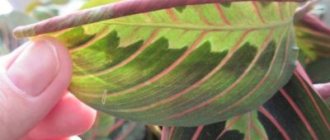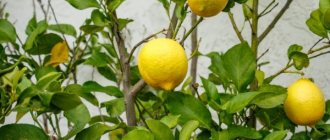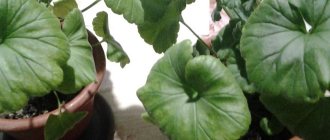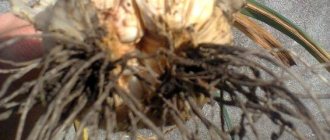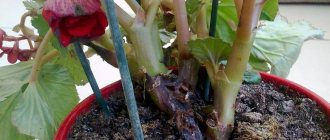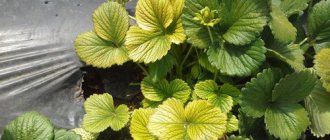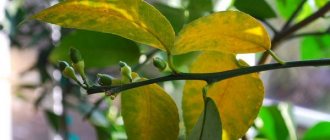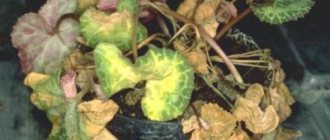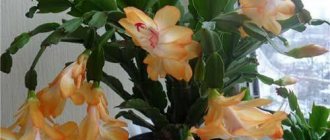Deviations from the thermal regime
Temperature fluctuations are the main reason why tomato leaves curl and dry in a greenhouse. Exorbitant temperatures in the greenhouse and hot, sultry weather when cultivating tomatoes in the garden are extremely unfavorable phenomena.
Important! The optimal temperature for greenhouse tomatoes is +22 degrees during the day and +18 degrees at night.
Temperatures above +30 degrees put plants under stress. To reduce the evaporation of precious moisture, tomato leaves are rolled into a tube. With the onset of twilight they spread out again.
To eliminate this reason for healthy tomato leaves curling in a greenhouse, you need to:
- open doors, transoms;
- whitewash the roof with chalk;
- curtain with a special fabric.
In extreme heat, garden tomato beds can be shaded and the tomatoes can be fed with nitroammophos at the rate of 20 g per 1 m², having previously dissolved the fertilizer in water.
You also need to water the tomatoes so that they do not curl with increased water in the morning or evening hours. The row spacing should be mulched with straw (sawdust).
If the heat in the greenhouse causes the leaves to curl inward, you can try spraying the plantings with a urea solution prepared according to the following recipe:
- urea – 2 tbsp. l.;
- water – 10 l;
- consumption of the prepared liquid – for 10 bushes.
After waiting a few days, it is recommended to re-treat the tomatoes against leaf curl with potassium sulfate, dissolving 10 g in 10 liters of water. This solution is enough for 10-11 bushes.
Proper care of seedlings
The health of seedlings depends on proper care. If all care measures are carried out in accordance with the requirements, the plants will quickly gain strength and take root in a new place without problems when transplanted.
- When sowing a tomato, you first need to disinfect the seeds and soil. In both cases, a solution of potassium permanganate is used.
- The sown seeds are covered with film or glass and put away in a warm place.
- When the first shoots appear, the cover is removed from the containers, and the seedlings themselves are placed in a bright, warm place.
Plants are fertilized every 2 weeks. Mullein infusion diluted with water and complex mineral fertilizers are suitable for this. Feeding can be alternated.
Watering seedlings should be moderate but regular. The seedlings are irrigated with a spray bottle. The grown sprouts are watered with a teaspoon, syringe or pipette directly to each plant or with a watering can without a nozzle along the edge of the container. More mature plants are watered in a tray, this promotes the formation of a strong root system.
The air temperature in the room is first lowered slightly and in the first 7 days it is maintained at 15 degrees during the day and 10 degrees at night. To do this, open the window slightly at night. In the second week, the temperature rises by 4 degrees day and night. This temperature regime is maintained until 3-4 true leaves appear.
Then the temperature for tomatoes should be 20-25 degrees during the day and 16-20 degrees at night. At higher temperatures and increased dry air, the room is ventilated and irrigated using a humidifier or spray bottle once a day.
Daylight hours for seedlings should be 12-14 hours. If the daylight hours are short, the plants are illuminated with a phytolamp in the morning and evening.
Plants should grow in light, but direct sunlight should not touch the leaves, as they can cause sunburn. The light should be diffused.
Planting of seedlings occurs when two true leaves are formed on the plants. The sprouts are planted in individual pots measuring 6 by 6 or 8 by 8 centimeters. Disposable cups, peat pots, cassettes or wide boxes, the height of which should be 15-20 centimeters, are used as containers.
- The soil mixture is poured into the container, the same as when sowing seeds.
- The earth is watered with a warm solution of potassium permanganate.
- After transplantation, the plants are watered after 4-5 days, this allows the plants to take root and not damage the roots.
- After the dive, additional illumination stops for 3-4 days, then resumes.
To protect seedlings from diseases and pests, preventative spraying with chemicals or folk remedies is carried out regularly.
Stepchildren formed on grown plants are carefully cut off. They are removed gradually.
After 20-25 days, the strengthened seedlings are transplanted into larger containers or a greenhouse.
Before planting, the seedlings are hardened off. First, the window opens. When the air temperature outside is 10-12 degrees, containers with tomatoes are taken out for 2-3 hours. After a week, the seedlings are left outside for the whole day and brought indoors or into a greenhouse at night. In hardened plants, the stems turn bluish-purple. When hardening, seedlings are watered abundantly.
Plants must be replanted in a timely manner. The root system should not be stressed. When transplanting seedlings, it is better to use the transshipment method; this protects the plants from technical damage and promotes rapid rooting and growth.
If all growing conditions are met, problems with leaves of tomato seedlings can be avoided. At the same time, the plants develop well and subsequently produce a healthy and abundant harvest.
Acute moisture deficiency
A common reason why the leaves of tomato seedlings curl up in a boat is a lack of moisture. It is recommended to water tomatoes abundantly and regularly, without long breaks.
A high need for moisture in tomatoes occurs after planting seedlings in garden beds or in a greenhouse. At this point, it is advisable to pour 4 liters of liquid onto each bush. After waiting 10 days, it is recommended to re-water, increasing the watering rate by 50%.
The following is based on the weather:
- if it’s hot and the tomatoes are slightly wilted, you need to water them twice a week;
- in cool weather, 1 irrigation per week is sufficient.
When the ovaries begin to form, the watering rate is increased by 1/3.
Experiencing a moisture deficit, the tomato begins to reduce the proportion of evaporated moisture and the leaves of the plant curl inward. Having noticed this, you should immediately start watering.
Photo. Tomatoes suffering from moisture deficiency
Lack of soil nutrition elements
The next reason why the leaves of tomato seedlings wither and curl is a lack of certain nutrients. Due to a lack of certain elements, the upper or lower leaves of the plant curl up or down; let’s look at how to deal with this deviation.
Phosphorus deficiency
With a small amount of phosphorus, the leaves curl upward, and the underside of the leaf blade turns purple. This disease can be cured by applying superphosphate under tomato bushes. Do the following work:
- 150 g of superphosphate pour 1 liter of boiling water;
- leave the composition for 20 hours;
- Dilute the extract with 10 liters of water;
- Water the resulting solution at the rate of 500 ml under the tomato bush.
Important! You can limit yourself to adding dry ash under the bushes, then you will have to wait a week longer for the result.
Copper deficiency
Copper is important in growing tomatoes. Copper deficiency is less common than others, especially when bushes are treated with Bordeaux mixture against fungal diseases.
Symptoms of copper deficiency:
- the edges of the leaves curl up;
- random blurry yellow spots appear on the leaf blade;
- then the tomato leaves turn black and die, as shown.
How to save the plant in this case? Experienced gardeners recommend spraying the bushes with any copper-containing preparation.
Important! Using this method, you can compensate for copper deficiency and protect tomato bushes from a number of diseases.
Little potassium in the soil
If the leaves curl up into a tube, a brown border appears along their edges - this is a symptom of a lack of potassium for nutrition. Treatment for such twisting is carried out by applying potassium fertilizer.
Potassium nitrate contains potassium and some nitrogen.
The solution is prepared and added as follows:
- dilute 1 tbsp. l. saltpeter in 10 liters of water;
- stir until completely dissolved;
- water, spending 500 ml for each bush.
Adherents of folk remedies for combating tomato diseases can treat with ash extract according to the following recipe:
- Pour boiling water over 100 g of ash;
- leave the composition for a day;
- every 2 hours the solution must be stirred;
- strain the solution;
- water the tomatoes at the root level at the rate of 500 ml per bush.
Important! You can spray tomato bushes with an ash solution; for better adhesion, it is advisable to add 30 g of soap to the composition.
Nitrogen deficiency
Nitrogen starvation occurs on depleted soils and when technology requirements are neglected. If there is insufficient nitrogen, the plant develops a yellow tint and the upper leaves become smaller.
When the leaves begin to lighten and curl downward, the tomatoes are experiencing severe nitrogen starvation. Then the leaves become yellow and dry out.
It is urgent to apply nitrogen fertilizer. Nitrogen starvation can be stopped by watering the bushes with herbal infusion.
Small proportion of calcium in the soil
The calcium type of starvation causes the leaf blade to curl upward, and the fruits are affected by blossom end rot.
How to feed tomatoes in such a situation? Vegetable growers use the following recipe:
- calcium nitrate – 21 g;
- ash – 380 g;
- urea – 11 g.
Important! All ingredients are diluted in a bucket of water, mixed and the solution is used for root feeding. One bucket is enough for 4 m² of plantings.
Reasons for curling leaves in tomatoes
If you find that the leaves on the tomato bushes have begun to curl, then, first of all, you need to determine the reason for this phenomenon, why the foliage is curling.
This is quite difficult to do. Therefore, first of all, it is necessary to eliminate the human factor. After all, most often the leaves are deformed due to violations of agricultural practices for growing tomatoes.
Improper watering
When curling leaves, first of all, pay attention to the watering regime. The fact is that if there is a lack of water, tomatoes begin to conserve moisture. To do this, they twist the leaves. This reduces the area of liquid evaporation.
The normal regime for watering tomatoes is once a week. In hot summers, the frequency of watering is increased. In rainy summers, on the contrary, they reduce it. The type of soil under the tomatoes is also taken into account. For heavy soils, water less frequently, and for dry, sandy soils - once every 3 days.
What to do?
First of all, it is necessary to normalize the watering regime. However, you should not try to replenish the fluid deficiency right away. It is best to water the plants several days in a row. This way you will avoid stagnation of water and possible rotting of the roots.
In greenhouses, the watering regime largely depends on temperature. If the thermometer shows less than 20 degrees, then water once a week. At a temperature of 25 degrees – once every 5 days. Up to 30 degrees, watering is carried out every other day. If the thermometer is more than 30, then water daily. Best in the early morning or late evening.
IMPORTANT! If leaves curl on tomatoes in a greenhouse, then in addition to normalizing watering, it is imperative to carry out ventilation.
High or low humidity
Low humidity most often indicates hot and dry weather. Under such conditions, moisture evaporation increases. This causes the leaf blades of the plant to curl.
What to do?
If you cannot regularly water your tomatoes or if the weather is hot and dry, you should mulch the soil under the tomatoes. This measure will reduce moisture evaporation.
Interestingly, curling of tomato leaves also occurs due to too high air humidity. Tomatoes cannot be helped in open ground. If increased humidity is observed in a greenhouse or greenhouse, then reduce the amount of watering and conduct ventilation more often.
Feature of the variety
In several cases, the curling of foliage is not caused by any external factor and is a genetic feature of a particular variety or hybrid.
For example, the leaves of cherry tomatoes and several other varieties of small-fruited and pink tomatoes often curl.
With a genetic predisposition, the foliage curls inward rather than outward (“chicken's foot”).
Lack of microelements
If the natural and climatic conditions for growing tomatoes are normal, it means that the leaves are curling due to a lack of nutrients.
Tomatoes react differently to deficiencies of various microelements:
- With a lack of potassium, the ends curl (“marginal burn”).
- When phosphorus , the leaf curls and turns purple.
- With a lack of zinc , the sheet curls inward and becomes brittle.
- With a lack of boron, the leaf curls and turns lighter.
- With a copper , the leaf curls into a tube, and also fades or becomes bluish.
- With a lack of iron, the leaf curls and turns yellow.
Phosphorus deficiency
What to do?
If there is a shortage of microelements, they are replenished. You can add either a specific element or carry out complex plant feeding.
It is recommended to carry out foliar feeding, since in this case the damaged leaves will quickly receive the necessary nutrients.
IMPORTANT! Organic fertilizers cannot provide the required amount of all microelements. Therefore, it is very important to feed tomatoes with complex mixtures.
Excess nutrition
The flip side of micronutrient deficiency is nutritional excess.
Unfortunately, many gardeners believe that the more fertilizer they add, the better it will be. It's a delusion. There must be the required amount of nutrients. And their excess is even more destructive than their deficiency.
Most often, novice gardeners “overfeed” tomatoes with nitrogen. The main sign of an excess of this element is thickening of the stem and curling of the leaves.
What to do?
First , water the tomatoes generously. Thus, nitrogen is washed out of the top layer of soil.
Secondly , feed the tomatoes with potassium sulfate or wood ash. The potassium contained in these fertilizers normalizes the chemical balance of the soil.
Temperature fluctuations
A change in temperature during the day by more than 10 degrees is also detrimental to tomatoes. The negative impact is also enhanced by increased humidity at night, which causes the appearance of fungal diseases. Tomatoes in closed ground suffer especially badly from this.
What to do?
If temperature fluctuations are too large, then it may be advisable to cover the tomatoes overnight by pre-treating the leaves with a weak solution of potassium permanganate.
Another way is to fertilize with potassium humate or other potassium fertilizer. But don't fertilize too often. One feeding per week is enough.
Incorrect and untimely stepsoning
Pinching is a necessary procedure when growing tomatoes. However, removing stepsons is still stressful for the plant. That is why it is very important to adhere to a specific scheme for carrying out this procedure.
Tomatoes are planted when the shoots have reached 5-7 cm in length. Removing side shoots later causes too much damage to the tomato bush. The plant reacts to it by curling its leaves.
In addition, leaves can curl due to the removal of too many stepsons at once.
Please note that the plant can react to improper pinching not only by curling the leaves, but also by shedding the ovaries and inflorescences. Therefore, it is very important to carry out the procedure at the right time and in accordance with the rules.
What to do?
If you notice that after pinching the leaves begin to curl into a tube, then the plant is treated with special growth stimulants. Among the most effective remedies are Epin Extra and Zircon . Feeding with complex fertilizer will also help.
Damage to the root system
Injury to the roots during planting and loosening the soil also leads to deformation of the leaf plates.
When planting tomato seedlings, you might find that the leaves of the seedlings have drooped and curled a little. This is a normal phenomenon, since during this period of time the plant’s root system is not yet very developed. In just a week or even a little less, the culture will return to normal.
Curling leaves of tomato seedlings
Roots are also damaged when loosening the soil. The reason for this is that the seedlings were not planted deep enough.
What to do?
If, 5-7 days after planting tomato seedlings, the leaves are still curled, then the seedlings must be fed with solutions based on growth stimulants. For example, “Heteroauxin” or “Kornevina” .
If the foliage on your tomatoes begins to curl due to improper loosening, then you need to water the bushes with preparations that stimulate root formation and support immunity. For example, “Zircon”, “Kornerost”, “Epin Extra”, “Kornevin” .
Chemical burn
When using chemicals to care for tomatoes, you should be very careful. The maximum permissible concentration of drugs must not be exceeded.
For example, potassium permanganate is one of the most popular remedies in the fight against fungus. But a very weak pink solution is diluted.
Also dangerous are a strong solution of boric acid, systemic herbicides and excess nitrogen.
What to do?
To help the plant, you need to prepare the following composition: 2 tablespoons of superphosphate per 1 bucket of water. It is necessary to carry out both root feeding and treat the tomato tops.
Excessive nutrient content
Some summer residents, in pursuit of high yields, apply a lot of mineral fertilizers. As a result, the leaves dry out and turn yellow, not because the plants lack something, but because of the application of excess fertilizers. Let's see what happens to tomatoes that are overfed with nutrients.
Excess nitrogen
If the soil contains an excess amount of nitrogen, the tops of the tomatoes curl, but the remaining leaves look quite normal.
Elimination of the problem: to correct the situation, immediately stop nitrogen fertilizing. To neutralize the effects of nitrogen, add potassium sulfate or ash extract to the soil.
Excessive amount of zinc
With excess zinc content, tomato leaves curl upward, and it may seem that the bushes do not have enough moisture. However, on the lower tier of the tomato bush, a secondary symptom of zinc overfeeding occurs - a purple color on the leaves and stems.
Elimination of the problem: you need to stop fertilizing and add organic matter.
Lots of manganese in the soil
If there is too much manganese in the soil, the leaves first curl, then become corrugated and turn bright green.
Elimination of the problem: you should stop feeding tomatoes with microelements.
Reasons: why leaves of tomato seedlings may curl
When the cotyledon leaves curl, this means that they will soon fall off and real leaves will begin to grow, this should not be a cause for concern. If permanent leaves curl, then this is an alarming sign and you need to understand the reasons.
There are several reasons why leaves may curl, these are:
- Neglecting to prepare seeds and soil for sowing;
- Deficiency or excess of nutrients;
- Excessive watering;
- Insufficient watering;
- Increased air dryness;
- High room temperature;
- Poor lighting or lack of light;
- Exposure to direct sunlight;
- Defeat by diseases;
- Pest damage;
- A cramped container in which seedlings grow;
- Mechanical damage during pinching, transplanting;
- Varietal feature.
Curling of leaves in some cases is a varietal feature of hybrids, such as: Oxheart, Fatima, Honey Drop, Japanese Crab, as well as some varieties of cherry tomatoes and tall varieties.
If the leaves of all the seedlings are thin, equally curled downwards, then this is a varietal feature of the plants. Leaves curl because the vein grows faster than the leaf blade.
Mechanical root injuries
After placing young seedlings in a permanent place, their leaves curl a little; this should not frighten the vegetable grower. In a week the bushes will look quite normal. If recovery does not occur, then the bushes should be treated with stimulating drugs.
Sometimes vegetable growers injure the roots when weeding and loosening tomatoes. As a result, the leaf plates curl upward along the entire length of the bush. To support the plants, you need to water the tomatoes so that they do not curl with a stimulating drug:
- Kornevin;
- Epin Extra;
- Cornerost;
- Zircon.
Preventive and therapeutic measures
In order not to treat seedlings or treat adult bushes with chemicals, it is better to take care of prevention in advance (Figure 8).
First, try to protect your tomatoes from heat. To do this, the bushes can be shaded and the soil mulched with light covering material. It will prevent the evaporation of moisture from the soil and prevent overheating of the roots. Secondly, to prevent the leaves from starting to dry out from lack of water, create a clear watering schedule and stick to it throughout the growing season.
Figure 8. Proper care and adherence to agricultural practices will help maintain plant health
Do not forget about timely fertilizing with solutions of organic substances, urea or complex mineral preparations. To prevent an excess of fertilizers in the soil, you must strictly follow the dosages specified in the instructions. In addition, you need to pinch the tops in time and carry out pinching so that the plant spends energy on the formation of fruits, and not on the growth of new shoots.
If your tomato leaves have started to curl, be sure to watch this video for helpful tips on how to fix this problem.
Violation of pinching technology
The leaves at the top of the bush and in its central part curl due to improper execution of the pinching procedure. Stepchildren grow from each leaf axil; they should be removed by breaking them off at a length of 5 cm. When the formation of bushes is delayed and the stepsons are broken out late, leaf curling begins.
Important! If overgrown stepsons have been removed and the tomato leaves have curled, you should spray the bushes with Zircon.
Tomato diseases
Quite often, tomato leaf blades curl due to various diseases. Various types of diseases develop most actively in dense plantings, in areas where crop rotation is not observed, where plants are over-watered and the soil is not loosened.
Stolbur
With this disease, tomato leaf blades usually curl and deform, especially in the upper part of the plant, and they change color to pinkish or purple. In the lower part of the plant, the leaves usually turn yellow. It is best to fight stolbur with the help of the drug “Fitoplasmin”, this is the most effective drug. To spray plants, you need to prepare the solution in strict accordance with the instructions on the package.
Bacterial canker of tomatoes
When tomato plants are infected with bacterial canker, the leaf blades first begin to curl upward and then wither. You can tell that this is a bacterial cancer by the reddish-brown spots located on young growths. Typically, the leaves at the bottom of tomato plants curl and wilt first, then the disease spreads higher up and eventually affects the entire plant.
As a preventive measure, taking into account the most rapid development of bacterial cancer in conditions of excess soil and air moisture and the presence of various injuries on plants, it is necessary to water the tomatoes with moderate portions of water, avoiding waterlogging of the soil and when working with plants (weeding, loosening the soil) to avoid damage at the bottom of the trunk of tomato plants.
It is difficult to fight bacterial canker of tomato, but in the initial stages of the disease, you can treat the plants with copper sulfate, copper oxychloride, or Bordeaux mixture. When carrying out treatments, try to wet the leaves from the bottom and top sides and also spray the surface of the soil. It’s great if you loosen the soil a little before cultivating it.
Curling of tomato leaves due to a viral disease
Pest exposure
Pests also cause damaged leaves of tomatoes to curl in greenhouses and open ground. Below are the most harmful insects that damage leaves.
Whitefly
This small white butterfly is a serious pest of greenhouse tomatoes. The butterfly and its larvae drink tomato juice, secreting sweet honeydew. This sticky mass is colonized by sooty fungus. As a result, the leaves curl into a tube and the tomatoes turn black, which leads to a significant loss of yield.
In case of focal spread of the pest, Fitoverm is used. If the spread of butterflies has become widespread, carry out 3 treatments at weekly intervals with Aktara.
Aphid
It is mainly garden tomatoes that suffer from the effects of aphids. The insect sucks the sap, causing the upper leaves to curl.
To destroy aphids, the following means are used:
- Spark;
- Proteus;
- Aktara.
Spider mite
This pest is classified as sucking. As a result of the influence of the mite, the leaves of tomatoes in the greenhouse begin to curl and dry out.
You can control the number of ticks using acaricidal agents:
- Flumaita;
- Borneo;
- Oberon.
Prevention measures
To prevent tomatoes' leaves from curling, it is important to follow the rules of agricultural technology. If the microclimate, watering and fertilizing regime are observed, the plants develop normally and bear fruit.
The following recommendations will help you avoid leaf curling in tomatoes:
- selection of varieties resistant to unstable climates;
- compliance with crop rotation;
- disinfection of seeds, greenhouses and garden tools;
- careful replanting of plants and loosening of the soil;
- constructing a shelter for tomatoes before frost;
- rationing of watering, control of soil moisture;
- regular ventilation of the greenhouse;
- weeding;
- correct pinching of bushes.
It is important to provide tomatoes with protection from diseases and pests. To prevent planting, they are sprayed with biological preparations Fitoverm and Fitosporin. Their active substances do not accumulate in fruits. Before fruiting begins, chemicals are used: Aktara, Karbofos, Iskra.
Folk remedies help protect plantings: dusting with wood ash, watering with infusion of garlic or wormwood. The best agricultural technology against pests is digging up the soil in spring and autumn, disinfecting seeds, and weeding.
Diseases of culture
Diseases are also the cause of leaves curling in tomatoes growing in greenhouses and open ground.
| Name of the disease | Symptoms | Control measures |
| Stolbur |
| The effect is achieved by treatment with Phytoplasmin. |
| Bacterial cancer |
|
|
Important! When treating for cancer, try to completely wet all the leaves with the chemical. It is advisable to wet the soil surface as well.
Lack or excess of feeding
A common problem for gardeners: wanting to speed up the growth of crops and get a more luxurious, juicy harvest, too much fertilizer is applied. However, this does not make tomatoes grow any better. Plants, on the contrary, begin to deteriorate from an excess of incoming microelements. The first signal of oversaturation of tomatoes with fertilizers is that the leaves curl up in a boat .
Tomatoes also suffer from lack of care for them. Too little fertilization of crops causes a deterioration in their condition. One of the symptoms of a deficiency of microelements and nutrients is that the leaves dry out and begin to curl.
For example, with a lack of potassium, the leaves curl, the veins of the leaf turn yellow, and its edges become brown. If there is not enough phosphorus, the leaves begin to curl, their veins become purple, and the base of the leaves turns pale green, with a grayish tint. A lack of boron leads to yellowing of the base of the leaves, and the veins acquire a purple tint. With copper deficiency, young leaves are primarily affected. They begin to curl towards the middle, yellow spots appear, which gradually turn black.
If tomatoes are oversaturated with nitrogen, the leaves not only curl, but also turn yellow . Also, the stems noticeably thicken, powerful stepsons are formed, which is considered a pathology. To normalize the nitrogen level and return the plants to their normal state, it is recommended in the open ground . It can be either stove or wood ash. Preparing the solution is quite simple - stir a glass of ash in a bucket of water. Treating tomatoes with such a solution will not only normalize the nitrogen level, but will also saturate them with a sufficient amount of potassium and phosphorus.
You can treat crops with the following solution:
- monophosphate - teaspoon;
- water – 10 liters.
Prepare a solution and spray each tomato bush. After this treatment, the leaves will stop curling.
You cannot fertilize greenhouse tomatoes with slurry and manure that is not sufficiently rotted. Fertilizing with manure will cause excess ammonia to form in the soil. As a result, the leaves curl inward, burn them, and necrotic damage to ripened tomatoes.
